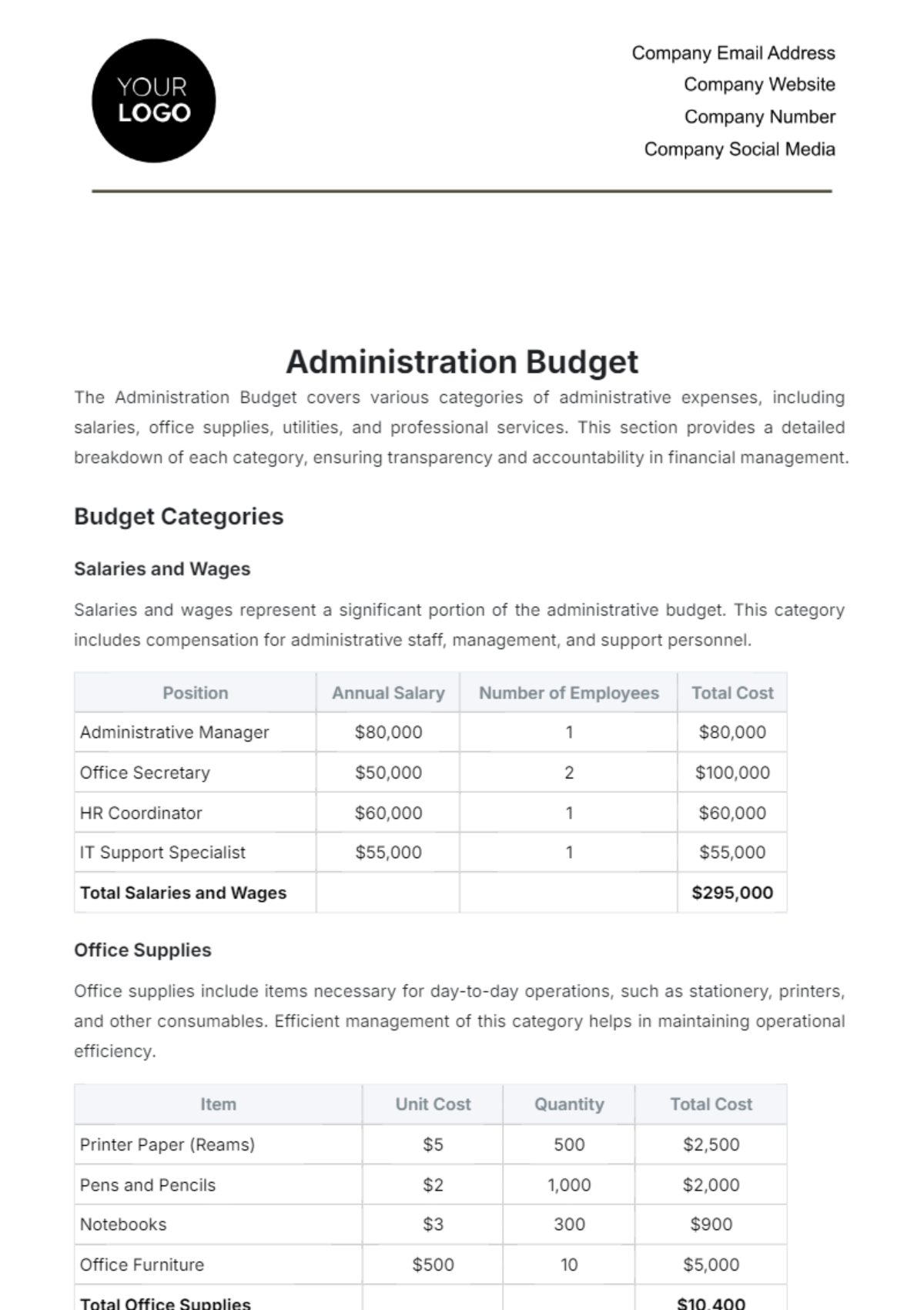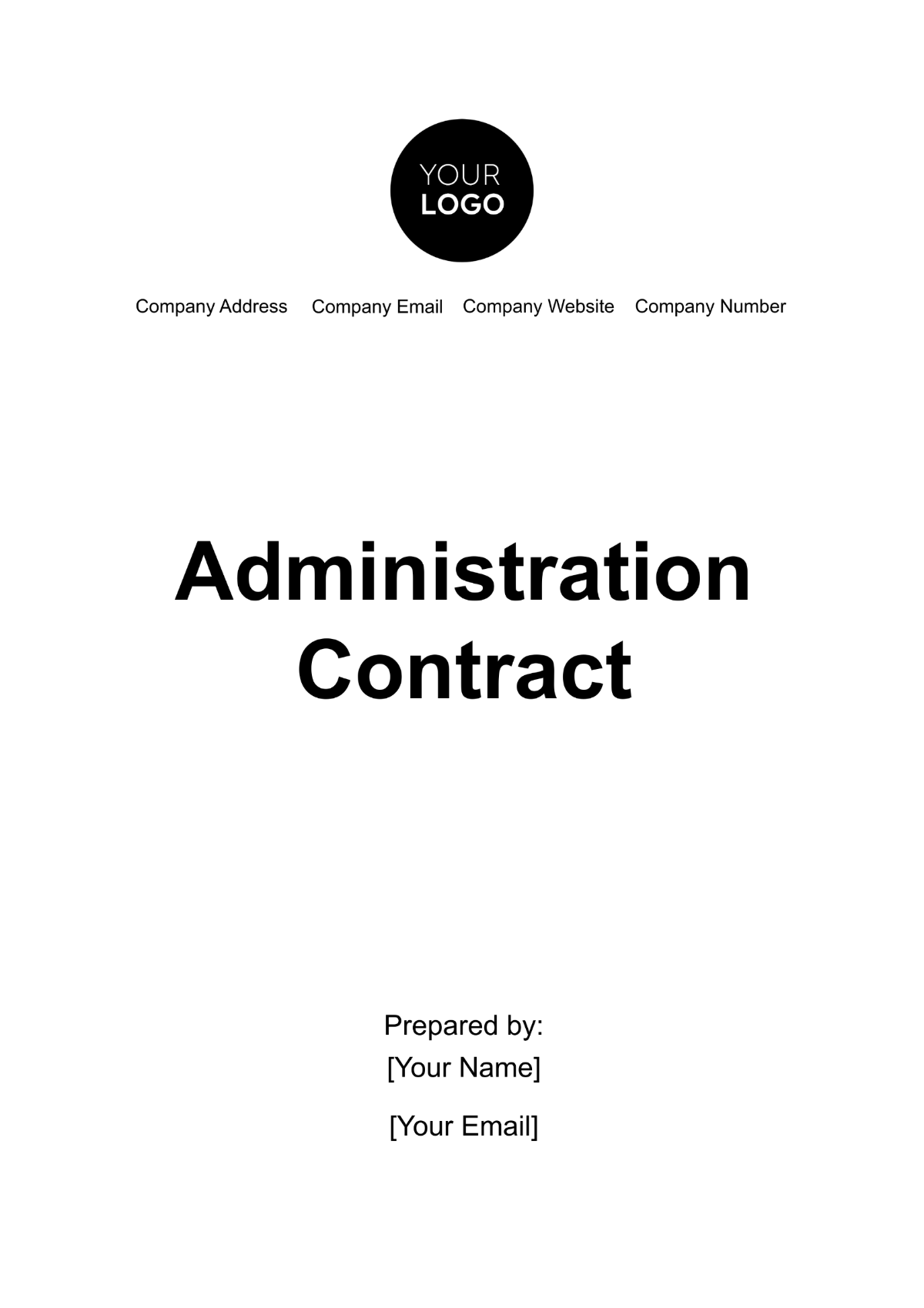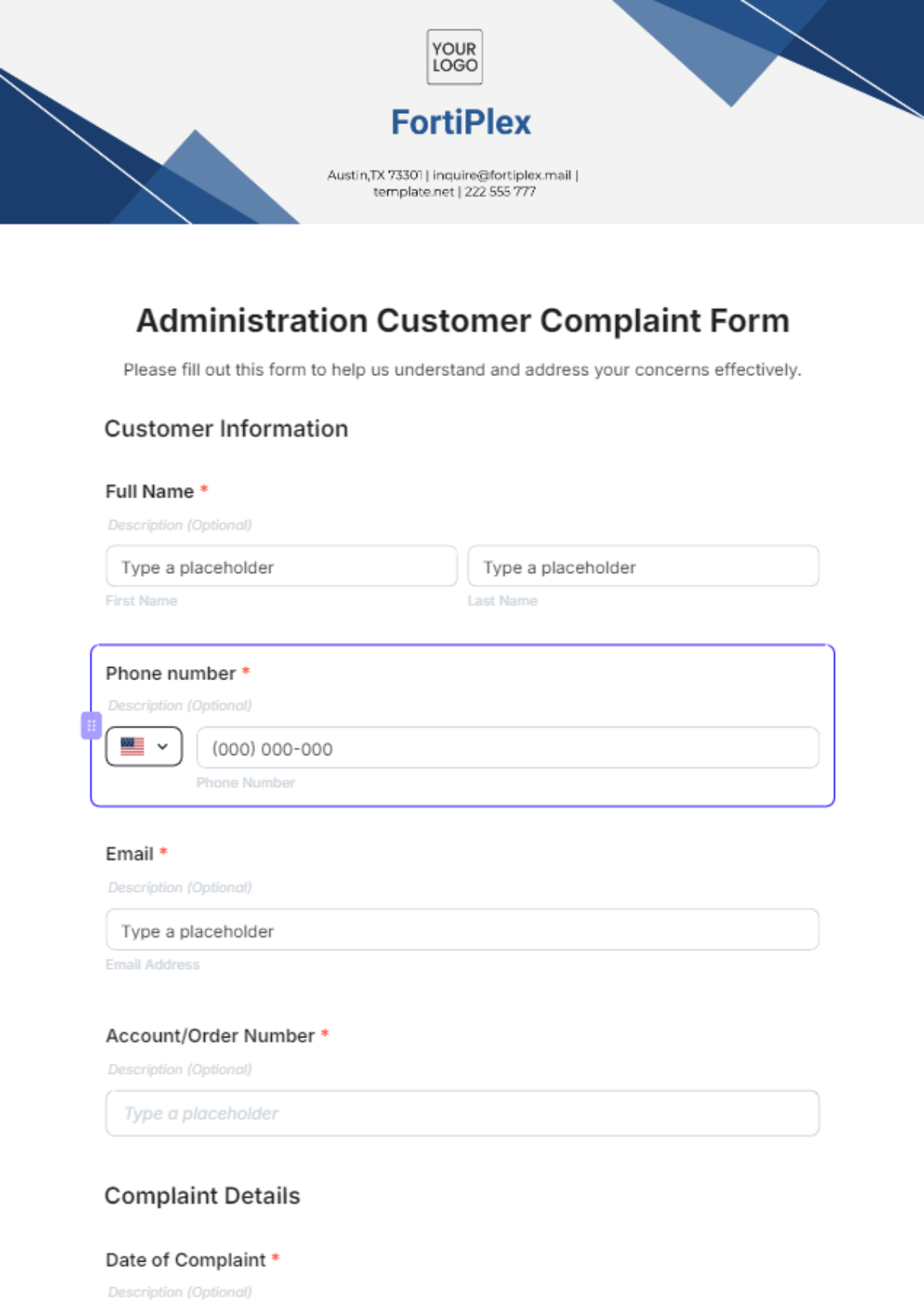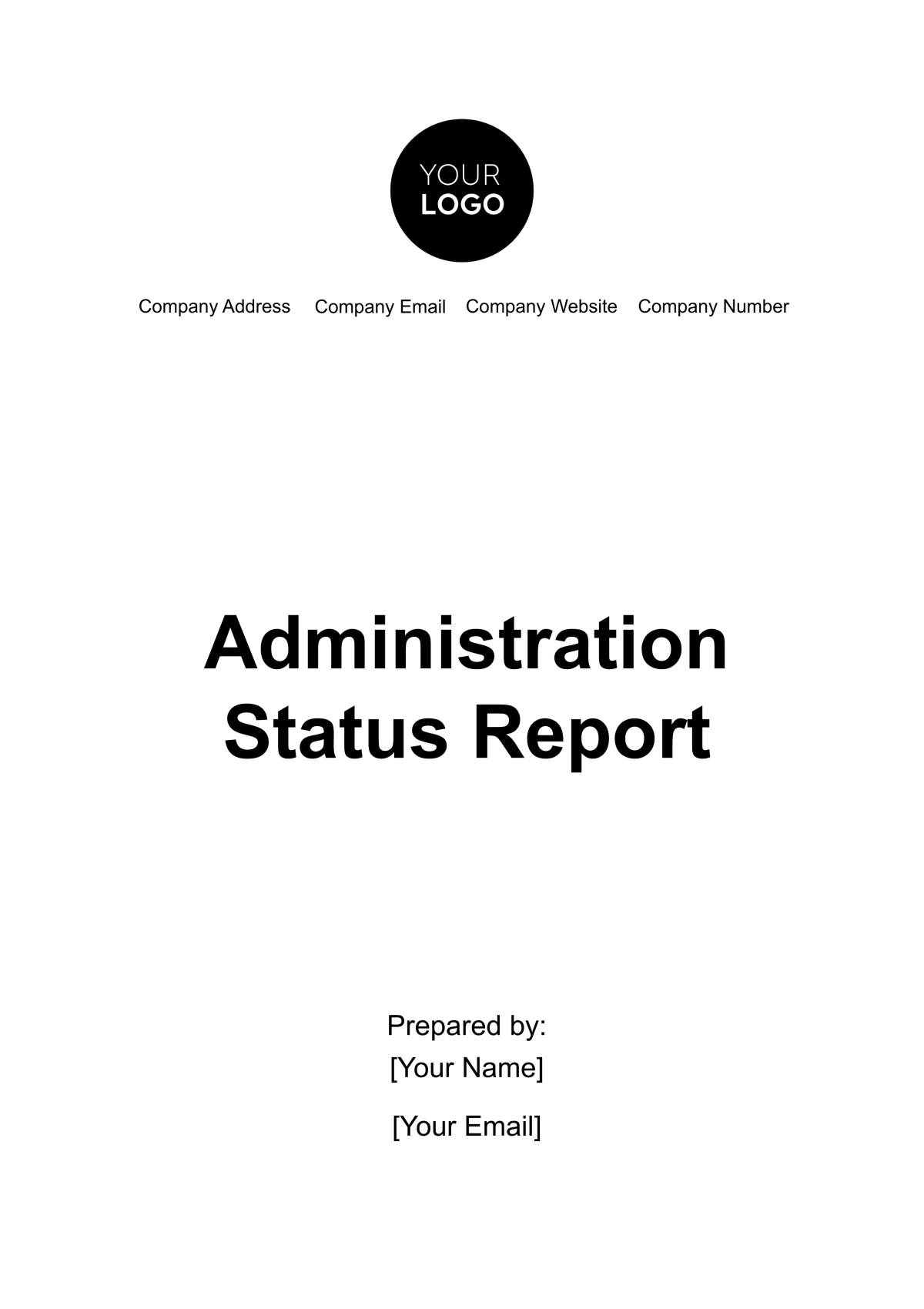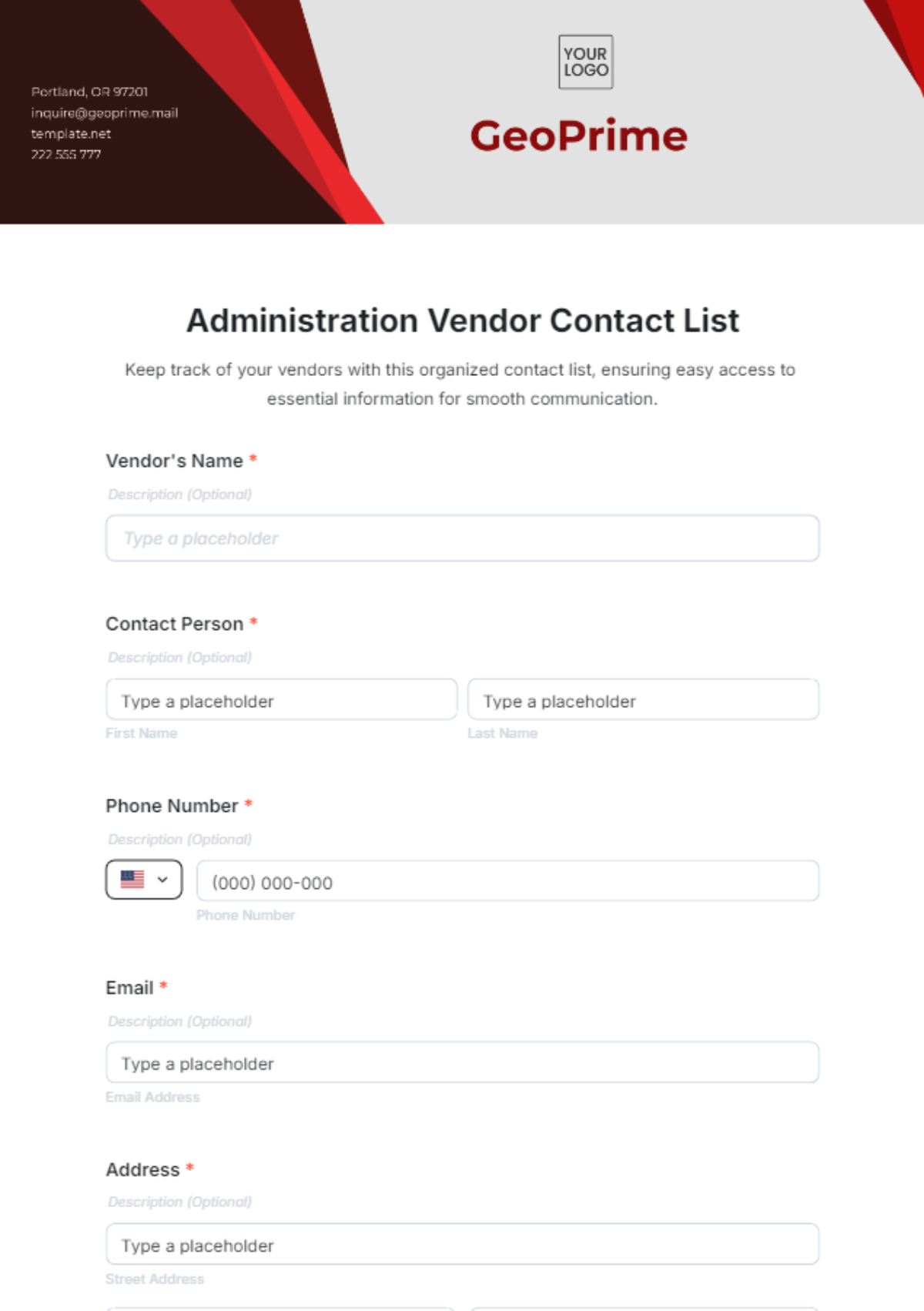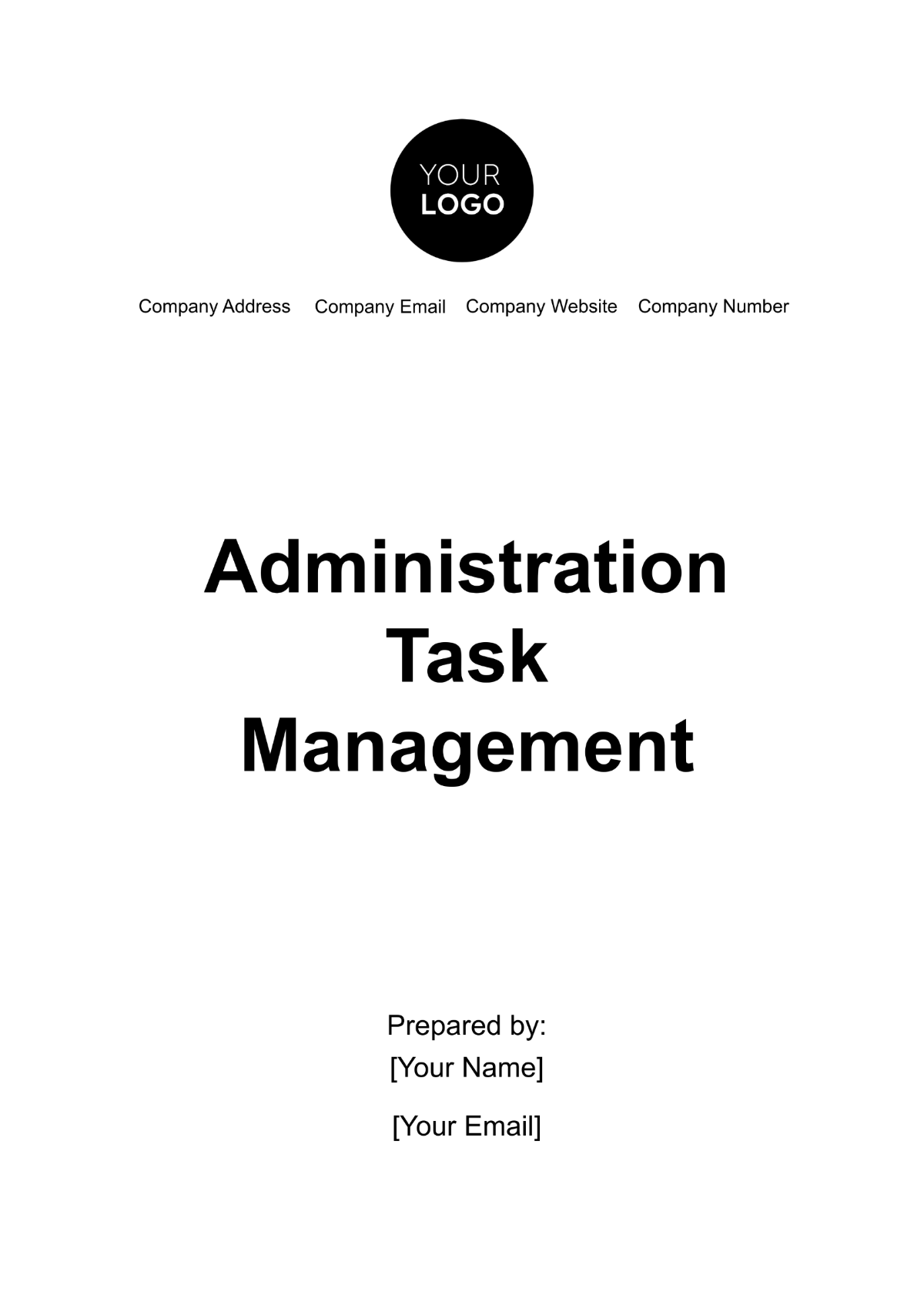Free Administration Compliance Audit Protocol Template
These protocols have been devised to ensure an effective execution of the Administration Compliance Audit Protocol within your organization. Through these measures, we aim to streamline the auditing process, enhance the company’s adherence to regulatory standards, and ultimately improve efficiency in operational procedures.
I. Objective
The primary objective of this Administration Compliance Audit Protocol is fourfold:
Ensure Absolute Adherence to Legislative and Regulatory Frameworks: This protocol aims to guarantee that [Your Company Name] remains in strict compliance with all applicable laws, regulations, and standards, mitigating risks of legal and financial penalties.
Define Clear Boundaries and Responsibilities Relating to Compliance Matters: It establishes precise responsibilities for compliance within [Your Company Name], ensuring that each team member understands their roles in maintaining regulatory adherence.
Promote Transparency in Operational Activities: The protocol advocates for open and clear documentation and reporting processes, enhancing the visibility of [Your Company Name]'s operations to stakeholders and regulatory bodies.
Implement Corrective Measures to Rectify Any Identified Non-compliance Issues: Through systematic identification and rectification of compliance gaps, the protocol supports [Your Company Name] in addressing potential vulnerabilities promptly.
Foster a Culture of Continual Improvement within the Organization: By encouraging ongoing evaluation and enhancement of compliance processes, [Your Company Name] commits to perpetual growth and improvement in operational efficiency and regulatory adherence.
II. Protocol Overview
This Administration Compliance Audit Protocol provides a robust framework for conducting comprehensive compliance audits within [Your Company Name]'s administrative department. It encompasses a detailed methodology, from preliminary planning to the implementation of corrective actions, aimed at enhancing regulatory compliance, operational transparency, and continuous improvement. Adherence to this protocol will fortify [Your Company Name]'s reputation for regulatory compliance and operational excellence, pivotal in maintaining stakeholder trust and competitive advantage.
A. Preliminary Planning and Scope Determination
In the preliminary phase, it's crucial to establish the audit's scope, objectives, and timeline. This involves defining the specific regulatory standards and legislative frameworks [Your Company Name] must adhere to, and identifying the administrative operations subject to these compliance requirements. By setting clear audit parameters, we ensure a focused and efficient audit process, laying the groundwork for a successful compliance assessment.
B. Execution of Audit Procedures
The execution phase is the heart of the audit process, where detailed evaluations of [Your Company Name]'s administrative procedures are conducted against the compliance checklist. This step involves a thorough review of operational and compliance records, interviews with key personnel, and direct observation of operational practices. Systematic documentation of findings, including any deviations from regulatory standards, is essential for transparency and accountability, providing a clear basis for the subsequent corrective actions.
C. Reporting and Implementing Corrective Actions
Upon completing the audit, a comprehensive report is prepared, highlighting compliance gaps, areas for improvement, and recommended corrective actions. This report serves as a critical tool for [Your Company Name]'s management to address non-compliance issues effectively and to strategize for continuous improvement. The final stage involves working collaboratively with relevant departments to implement these corrective measures, ensuring that [Your Company Name] not only meets but exceeds regulatory standards, reinforcing its commitment to excellence and integrity.
III. Materials and Equipment
To execute this protocol effectively, the following resources are required:
Regulatory Compliance Manuals: Comprehensive guides detailing the legislative and regulatory standards applicable to [Your Company Name].
Administration’s Operational and Compliance Records: Historical and current records documenting operational processes and previous audit outcomes.
Audit Checklist: A structured tool for systematically evaluating compliance across different operational aspects.
Reporting Forms: Standardized forms for documenting audit findings, non-compliance issues, and recommendations for corrective actions.
Computer System with Audit Software: Advanced software tools for efficient audit data management, analysis, and reporting.
IV. Procedure
This section outlines a structured approach to assessing and enhancing compliance within [Your Company Name]'s administrative operations. This comprehensive procedure ensures thorough scrutiny of the company's adherence to legal and regulatory standards, aiming to identify discrepancies, improve operational efficiency, and implement effective corrective actions. By meticulously following these steps, [Your Company Name] demonstrates its unwavering commitment to regulatory compliance, operational integrity, and continuous improvement, thereby reinforcing its stature as a responsible and transparent entity in the corporate landscape.
1. Preliminary Review
Initiate the audit with a thorough review of the Regulatory Compliance Manuals. This step is crucial for auditors to familiarize themselves with the legislative and regulatory frameworks relevant to [Your Company Name]. It involves identifying the operational aspects that are governed by these standards and documenting them meticulously. This foundational knowledge is essential for a targeted and efficient audit process.
Step | Task Description | Documents/Tools Required | Responsible Party |
|---|---|---|---|
1.1 | Acquire the latest Regulatory Compliance Manuals | Regulatory Compliance Manuals | Audit Team |
1.2 | Identify relevant legislative and regulatory frameworks | Compliance Checklist, Legal Databases | Compliance Officer |
1.3 | Document operational aspects governed by these standards | Documentation Template, Compliance Matrix | Audit Team |
1.4 | Prepare an initial report outlining the scope of the audit | Audit Scope Document | Lead Auditor |
2. Operational and Compliance Records Examination
Proceed to evaluate the operational and compliance records of the administrative department. This examination focuses on identifying any deviations or lapses from the stipulated regulatory standards. By analyzing these records, auditors can pinpoint specific areas where compliance is lacking, providing a clear focus for subsequent investigation and improvement.
Step | Task Description | Documents/Tools Required | Responsible Party |
|---|---|---|---|
2.1 | Gather operational and compliance records from the administration department | Operational Records, Compliance Records | Department Heads |
2.2 | Review records for deviations from regulatory standards | Comparison Tool, Records Review Template | Audit Team |
2.3 | Identify specific areas requiring attention or improvement | Non-compliance Log, Improvement Tracker | Compliance Officer |
2.4 | Document findings for further analysis | Findings Report Template | Audit Team |
3. Compliance Verification
Employ an audit checklist to methodically assess compliance across various operational aspects. This step involves a detailed verification process, where each item on the checklist is examined against regulatory requirements. Document findings meticulously, noting both compliance failures and areas for improvement. This systematic approach ensures no aspect is overlooked, facilitating comprehensive compliance assessment.
Step | Task Description | Documents/Tools Required | Responsible Party |
|---|---|---|---|
3.1 | Develop or update the audit checklist based on regulatory standards | Audit Checklist, Regulatory Standards Database | Audit Team |
3.2 | Systematically verify compliance for each operational aspect | Audit Software, Checklist | Audit Team |
3.3 | Document compliance failures and improvement opportunities | Non-compliance & Improvement Log | Compliance Officer |
3.4 | Summarize findings for management review | Executive Summary Template | Lead Auditor |
4. Audit Findings and Recommendations
Compile the audit findings into a comprehensive report. This report should highlight identified compliance issues, propose actionable suggestions for improvement, and establish a realistic timeline for implementing corrective measures. The clarity and thoroughness of this report are vital for understanding the audit's outcomes and planning the way forward.
Step | Task Description | Documents/Tools Required | Responsible Party |
|---|---|---|---|
4.1 | Compile a comprehensive audit report | Audit Report Template, Findings Data | Lead Auditor |
4.2 | Highlight compliance issues and propose improvements | Recommendations Document, Action Plan Template | Audit Team |
4.3 | Establish a realistic timeline for corrective actions | Timeline Planner, Project Management Tool | Project Manager |
4.4 | Prepare presentation materials for management briefing | Presentation Software, Report Summary | Lead Auditor |
5. Management Debriefing
Conclude the procedure by debriefing [Your Company Name]'s management team on the audit findings. Present a detailed roadmap for corrective action, emphasizing the importance of swift and effective implementation to address non-compliance issues. This final step ensures that the management is fully informed and engaged in the process of reinforcing compliance and operational excellence.
Step | Task Description | Documents/Tools Required | Responsible Party |
|---|---|---|---|
5.1 | Schedule a debriefing session with the management team | Meeting Scheduler, Conference Room Booking | Administrative Assistant |
5.2 | Present audit findings and proposed corrective measures | Presentation Materials, Detailed Report | Lead Auditor |
5.3 | Discuss and finalize the roadmap for implementing corrective actions | Implementation Plan, Feedback Form | Management Team |
5.4 | Follow up on the implementation process and adjustments | Follow-up Schedule, Implementation Review Checklist | Compliance Officer |
V. Data Collection
This part meticulously outlines the types of data crucial for a thorough audit, encompassing regulatory standards, operational records, and corrective measures. This systematic approach to gathering and analyzing data not only aids in identifying compliance gaps but also facilitates the development of effective strategies for continuous improvement. Ensuring accuracy and completeness in data collection is pivotal for deriving meaningful insights and fostering a culture of compliance and operational efficiency within [Your Company Name].
A. List of Applicable Regulatory Standards
A comprehensive compilation of all relevant legal and regulatory frameworks that [Your Company Name] must comply with. This includes industry-specific regulations, national and international standards, and any other legal obligations pertinent to the company's operations.
Regulatory Standard | Description | Applicable Department(s) | Review Date |
|---|---|---|---|
ISO 9001:2050 | Quality Management Systems Requirements | All Departments | [MM-DD-YYYY] |
GDPR (General Data Protection Regulation) | Data protection and privacy for individuals within the European Union and the European Economic Area | IT, HR, Marketing | [MM-DD-YYYY] |
OSHA 3100:2049 | Occupational Safety and Health Standards | Operations, Manufacturing | [MM-DD-YYYY] |
SOX Act 2051 | Standards for all U.S. public company boards, management, and public accounting firms | Finance, Accounting | [MM-DD-YYYY] |
B. Records of Operational Activities
Detailed documentation of the company's operational processes, activities, and transactions. This data is critical for assessing the alignment of [Your Company Name]'s practices with the established regulatory requirements and identifying areas for operational enhancements.
Record Type | Description | Department | Last Updated |
|---|---|---|---|
Sales Transactions | Detailed log of all sales activities, including client interactions and transaction values | Sales | [MM-DD-YYYY] |
Production Logs | Documentation of production processes, timelines, and quality control measures | Manufacturing | [MM-DD-YYYY] |
Employee Training Records | Records of all employee training sessions, including dates, topics, and attendance | HR | [MM-DD-YYYY] |
Maintenance Schedules | Detailed schedules and logs of equipment maintenance activities | Operations | [MM-DD-YYYY] |
C. Audit Checklist Tracking
A dynamic tool that tracks the progress of the audit against a predefined checklist. This ensures a systematic review of each compliance aspect, facilitating thorough coverage of all regulatory and operational parameters under scrutiny.
Checklist Item | Compliance Requirement | Status (Compliant/Non-Compliant) | Notes |
|---|---|---|---|
Data Protection Policies | GDPR Compliance | Compliant | Updated policies on [MM-DD-YYYY] |
Quality Management System | ISO 9001:2050 Compliance | Non-Compliant | Requires process optimization |
Safety Training | OSHA 3100:2049 Compliance | Compliant | Last training conducted on [MM-DD-YYYY] |
Financial Reporting | SOX Act 2051 Compliance | Non-Compliant | Discrepancies in report accuracy |
D. Non-compliance Records
Documentation of any instances where [Your Company Name]'s operations have deviated from regulatory standards. These records are vital for understanding the nature and frequency of compliance issues, aiding in the prioritization of corrective actions.
Issue | Regulatory Standard | Detected On | Corrective Action Deadline |
|---|---|---|---|
Inadequate Data Encryption | GDPR | [MM-DD-YYYY] | [MM-DD-YYYY] |
Quality Control Failures | ISO 9001:2050 | [MM-DD-YYYY] | [MM-DD-YYYY] |
Incomplete Safety Equipment | OSHA 3100:2049 | [MM-DD-YYYY] | [MM-DD-YYYY] |
Financial Misreporting | SOX Act 2051 | [MM-DD-YYYY] | [MM-DD-YYYY] |
E. Corrective Action Plans
Strategized responses to identified compliance gaps, detailing the steps required to rectify issues and prevent their recurrence. These plans are essential for closing compliance gaps and enhancing the overall integrity and efficiency of [Your Company Name]'s operational practices.
Corrective Action | Objective | Responsible Department | Completion Target Date |
|---|---|---|---|
Implement Enhanced Data Encryption | Ensure GDPR compliance by securing personal data | IT | [MM-DD-YYYY] |
Revise Quality Control Protocols | Achieve ISO 9001:2050 compliance through improved product quality | Manufacturing | [MM-DD-YYYY] |
Purchase and Distribute Safety Equipment | Meet OSHA 3100:2049 standards for workplace safety | Operations | [MM-DD-YYYY] |
Audit and Correct Financial Reports | Address SOX Act 2051 requirements for accurate financial reporting | Finance | [MM-DD-YYYY] |
VI. Safety Considerations
In the table below, we provide a clear and organized framework for addressing each critical safety consideration, ensuring that all aspects of data security, physical safety, and protocol adherence are meticulously planned and implemented. By adhering to these guidelines, [Your Company Name] can maintain a secure and efficient environment conducive to a successful and compliant audit process.
Safety Measure | Description | Implementation Method | Responsible Department |
|---|---|---|---|
Data Security | Protect confidential data throughout the audit. | Utilize encryption and access controls on all audit-related digital files. | IT Security |
System Security | Ensure all computer systems are secure. | Install and update security software on all devices used in the audit. | IT Support |
Document Security | Prevent loss or unauthorized access to official documents. | Implement physical and digital document management protocols, including secure storage and tracking. | Administration |
Database Logout | Safeguard information in secure databases. | Enforce automatic logout protocols and train auditors on secure database practices. | IT Security |
Physical Safety | Ensure the safety of auditors during physical file examination and equipment use. | Conduct safety briefings and provide personal protective equipment as needed. | Health & Safety |
Audit Material Access | Control access to audit materials and information. | Establish a secure audit environment and access permissions for audit materials. | Audit Team |
Confidential Communications | Maintain the confidentiality of discussions. | Use encrypted communication channels for sharing sensitive information. | IT Security |
Confidentiality Training | Ensure all personnel are aware of confidentiality guidelines. | Provide mandatory confidentiality and data protection training for all auditing staff. | HR & Compliance |
External Storage Devices | Prevent data breaches through external devices. | Prohibit the use of unauthorized external storage devices and conduct regular IT audits. | IT Security |
Adherence to Protocols | Follow the company's established safety protocols. | Regularly review and update safety protocols; ensure compliance through audits and inspections. | Health & Safety |
VII. Expected Results
This comprehensive overview anticipates enhancements in regulatory compliance, operational efficiency, and organizational reputation, underpinning the strategic importance of the audit in fostering a culture of transparency, improvement, and trust. By identifying areas for improvement and rectifying compliance gaps, [Your Company Name] commits to upholding the highest standards of operation, thereby solidifying its position as a leader in its industry.
A. Enhanced Regulatory Compliance
The primary outcome of this audit is the achievement of optimal compliance with all relevant regulatory standards. This ensures that [Your Company Name] not only meets legal obligations but also minimizes risk, thereby protecting the organization and its stakeholders from potential legal and financial repercussions.
B. Operational Improvement
The audit process is designed to uncover inefficiencies and areas requiring enhancement within the company’s operations. By systematically identifying and addressing these areas, [Your Company Name] can streamline processes, improve productivity, and ultimately increase profitability. This focus on continual improvement demonstrates the company’s dedication to excellence and its proactive approach to business management.
C. Reputation and Trust
A successful audit reinforces [Your Company Name]'s reputation as a trustworthy and reliable entity committed to best practices and high standards of operation. This reputation for integrity and excellence is crucial for maintaining confidence among stakeholders, including customers, investors, and regulatory bodies. It underscores the company’s commitment to quality, transparency, and accountability, further distinguishing it in the competitive market landscape.
VIII. Conclusion
The Administration Compliance Audit Protocol stands as a cornerstone in the architecture of corporate governance for [Your Company Name]. This meticulously designed framework is instrumental in guiding the organization towards achieving and surpassing its compliance objectives, thereby laying a solid foundation for enhanced operational efficacy and strategic growth. The adoption and rigorous implementation of these protocols across various operational dimensions underscore a resolute commitment to continuous improvement, regulatory adherence, and ethical business practices.
A. Strategic Alignment and Continuous Improvement
By integrating these protocols into the core operational strategies, [Your Company Name] not only commits to a path of relentless improvement but also ensures a dynamic alignment with evolving regulatory landscapes. This strategic foresight in anticipating and adapting to legislative changes exemplifies the organization's agility and resilience, positioning it favorably within its industry.
B. Mitigation of Non-compliance Risks
The protocol's comprehensive approach to identifying, addressing, and rectifying non-compliance issues serves as a proactive measure against potential legal and financial exposures. It fortifies the organization's risk management strategies, safeguarding its assets, reputation, and stakeholder interests against adverse compliance-related contingencies.
C. Reinforcement of Brand Identity and Trust
Through the consistent application of this audit protocol, [Your Company Name] not only reaffirms its brand identity as a paragon of compliance and operational excellence but also deepens trust with clients, investors, and regulatory bodies. This enhanced trust capital is invaluable, fostering stronger relationships and opening avenues for sustainable growth and competitive advantage.

